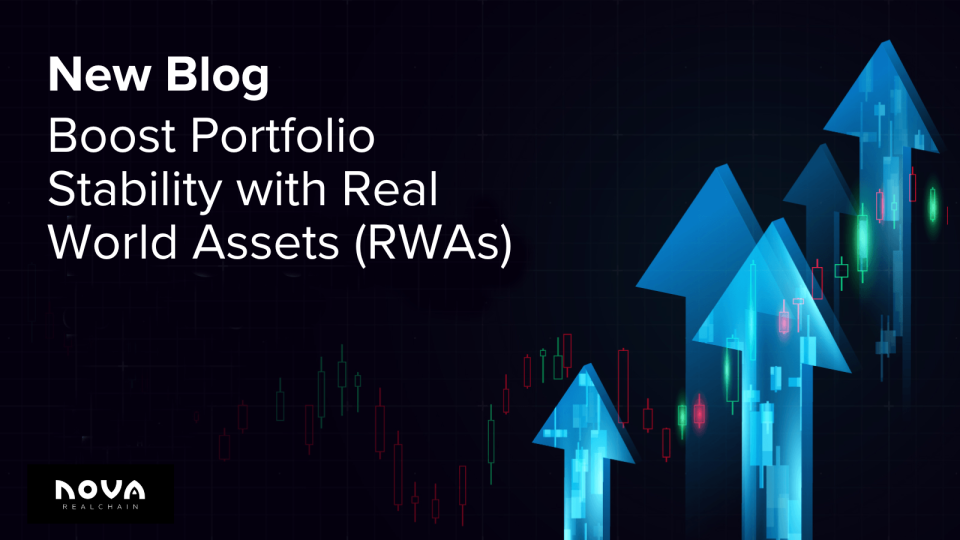Introduction to Real World Assets (RWAs)
In the dynamic and volatile world of cryptocurrencies, investors constantly seek ways to diversify their portfolios and mitigate risks. An emerging and promising solution is the integration of Real World Assets (RWAs). These assets, when tokenized and managed on the blockchain, offer a pathway to enhance financial stability and reduce the characteristic volatility of crypto markets.
What Are RWAs?
Real World Assets (RWAs) are tangible or intangible assets that are tokenized and represented on the blockchain. Examples include real estate, commodities, art, and intellectual property. Tokenization of RWAs allows these assets to be bought, sold, and traded in a digital format, providing greater liquidity and access.
The Role of Tokenization
Tokenization converts real world assets into digital tokens that represent ownership or a stake in the underlying asset. This process enhances liquidity, transparency, and security in asset management. Moreover, tokenization allows for fractional ownership, making high-value assets more accessible to a broader range of investors.
The Importance of Diversification
Mitigating Volatility
Diversification spreads investments across different asset classes, reducing the impact of volatility in any single market. Cryptocurrency markets are known for their high volatility; integrating RWAs can stabilize investment portfolios. For instance, while cryptocurrencies can experience significant price swings, tokenized real estate or commodities tend to show more stable price movements, thus balancing the overall risk.
Enhancing Portfolio Stability
A diversified portfolio includes a mix of asset types, balancing high-risk and low-risk investments. RWAs add a layer of stability due to their tangible nature and often lower volatility. Case studies have demonstrated that portfolios combining digital and real world assets tend to perform better over the long term, offering a buffer against market downturns and reducing the overall risk exposure.
Benefits of Integrating RWAs
Broadening Investment Horizons
Integrating Real World Assets (RWAs) into cryptocurrency portfolios significantly broadens investment horizons. Traditionally, investment opportunities in assets like real estate, commodities, and art have been limited to a select few due to high entry barriers. However, tokenization democratizes access to these asset classes by allowing fractional ownership. This means investors can now diversify their portfolios with smaller amounts of capital, accessing a broader range of investment opportunities that were previously out of reach.
- Access to Traditional Asset Classes: By incorporating RWAs, investors can include a mix of traditional assets such as real estate, commodities, and art, which are less volatile compared to cryptocurrencies.
- Increased Investment Opportunities: Tokenization opens up new markets, enabling investors to diversify their portfolios beyond digital assets.
Reducing Dependency on Digital Assets
A significant benefit of integrating RWAs is the reduction of dependency on highly volatile digital assets. Cryptocurrencies are known for their extreme price fluctuations, which can pose considerable risks to an investor’s portfolio. By adding RWAs to the mix, investors can balance their portfolios with more stable, tangible assets.
- Balanced Portfolios: Including RWAs helps create a balanced portfolio by combining digital and real world assets. This reduces the overall volatility and risk associated with crypto investments.
- Risk Mitigation: RWAs act as a hedge against the high volatility of cryptocurrencies, providing a more predictable and stable investment option.
Enhancing Liquidity and Stability
Tokenized RWAs enhance liquidity and stability in investment portfolios. Traditionally, assets like real estate and art are considered illiquid, meaning they cannot be quickly sold or exchanged for cash without significant loss of value. Tokenization addresses this issue by creating digital tokens that represent ownership of these assets, which can be easily traded on blockchain platforms.
- Increased Liquidity: Tokenized assets can be traded more easily than their physical counterparts, providing investors with quicker access to cash.
- Stable Value: RWAs tend to have a more stable value compared to digital currencies, which helps stabilize the overall portfolio.
Nova Real Chain: A Pioneer in RWA Integration
Nova Real Chain is at the forefront of leveraging blockchain technology to transform Real World Assets into secure, liquid, and accessible digital tokens. Their innovative platform provides a trusted and efficient solution for integrating RWAs into cryptocurrency portfolios.
- Innovative Solutions: Nova Real Chain employs Layer-2 solutions on Ethereum to enhance scalability and reduce transaction costs, making it easier for investors to trade tokenized assets.
- Secure and Transparent Transactions: The platform ensures the authenticity and security of tokenized assets through rigorous validation processes and the involvement of certified appraisers and custodians.
- Case Studies and Success Stories: Nova Real Chain has successfully tokenized various assets, demonstrating the practical application and benefits of RWAs in the crypto space.
Conclusion
Incorporating Real World Assets into cryptocurrency portfolios not only enhances diversification but also significantly reduces risks. RWAs provide a stable and tangible counterbalance to the volatility of digital assets, ensuring greater financial stability and access to a broader range of investment opportunities. Platforms like Nova Real Chain play a crucial role in facilitating this integration, offering innovative solutions that make tokenization secure, efficient, and accessible. By leveraging RWAs, investors can build more resilient and diversified portfolios, paving the way for a more balanced and secure financial future.
